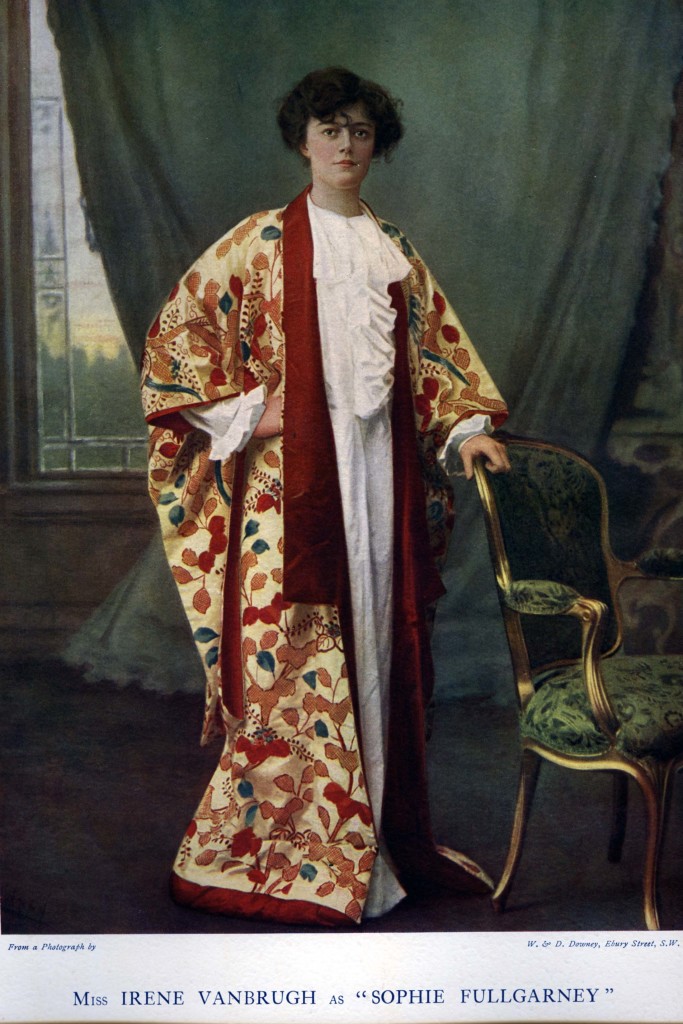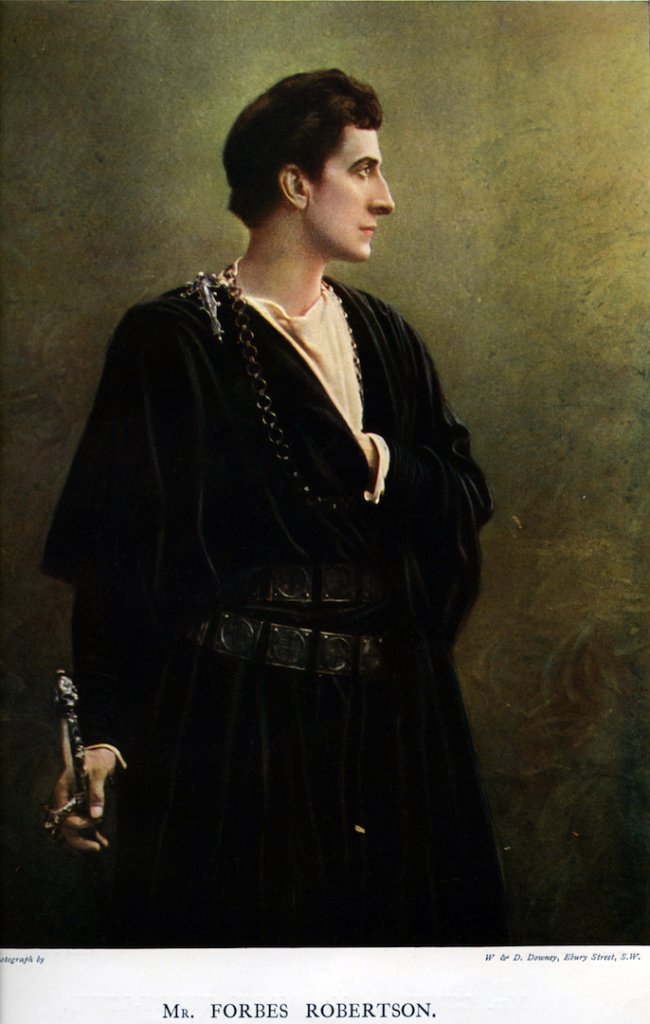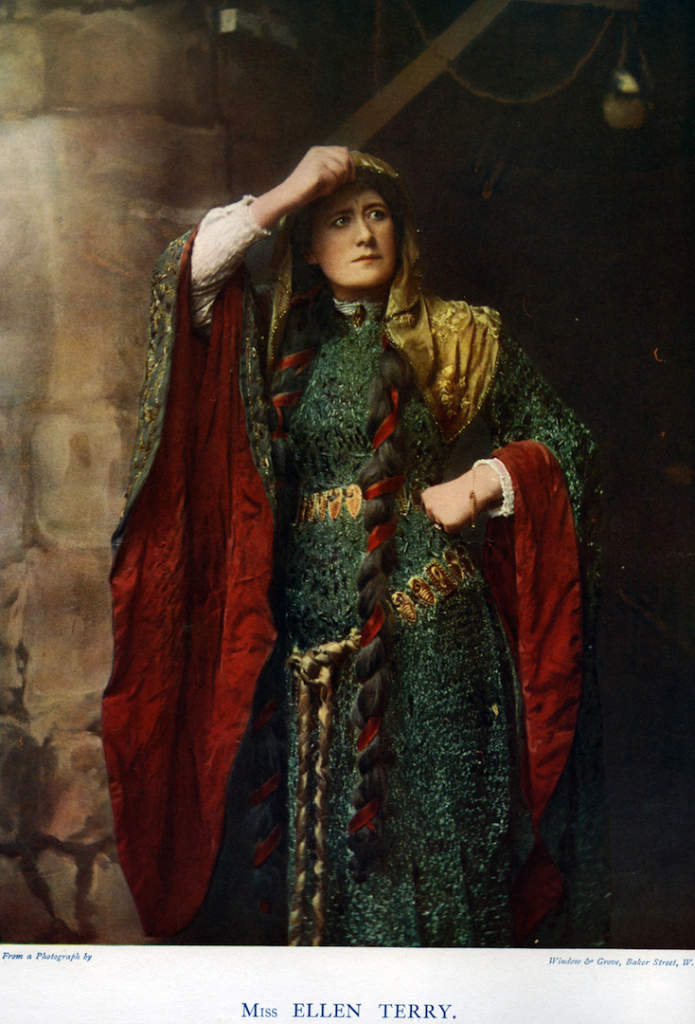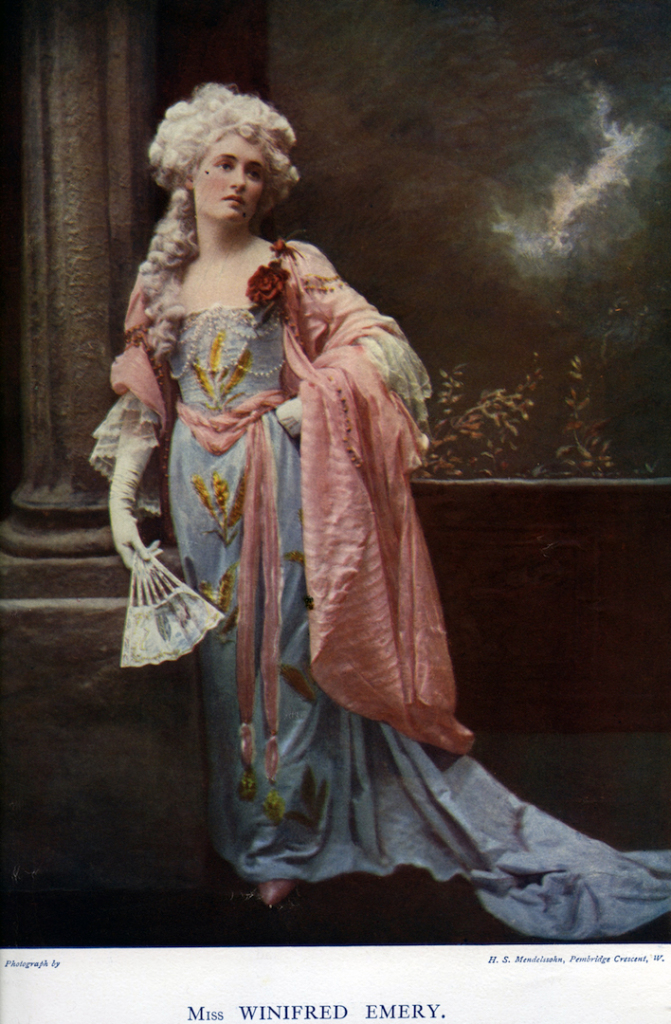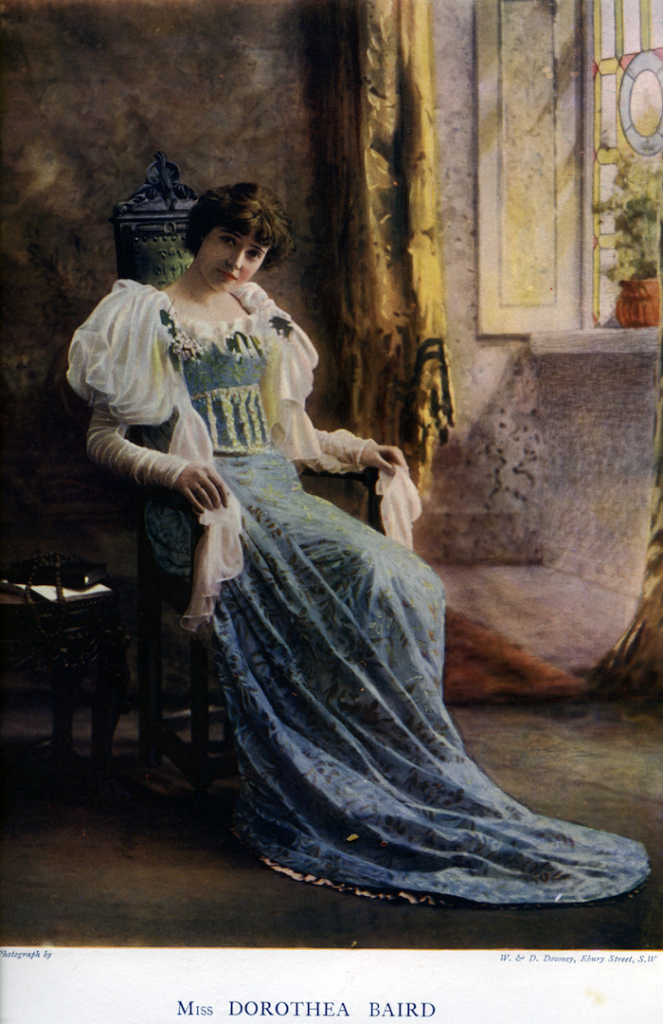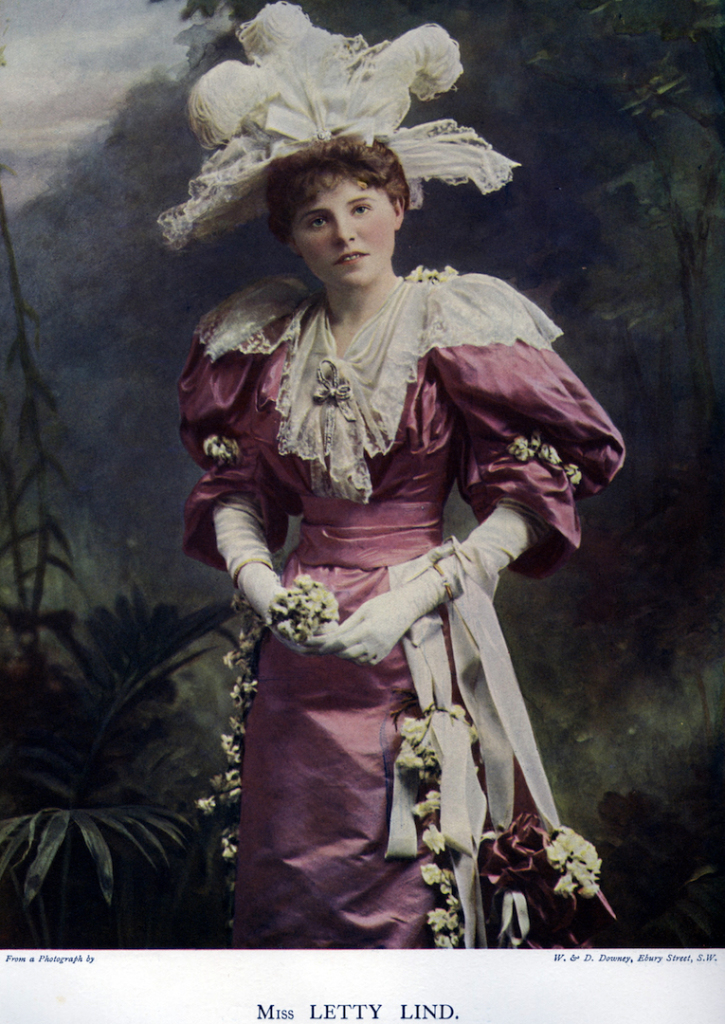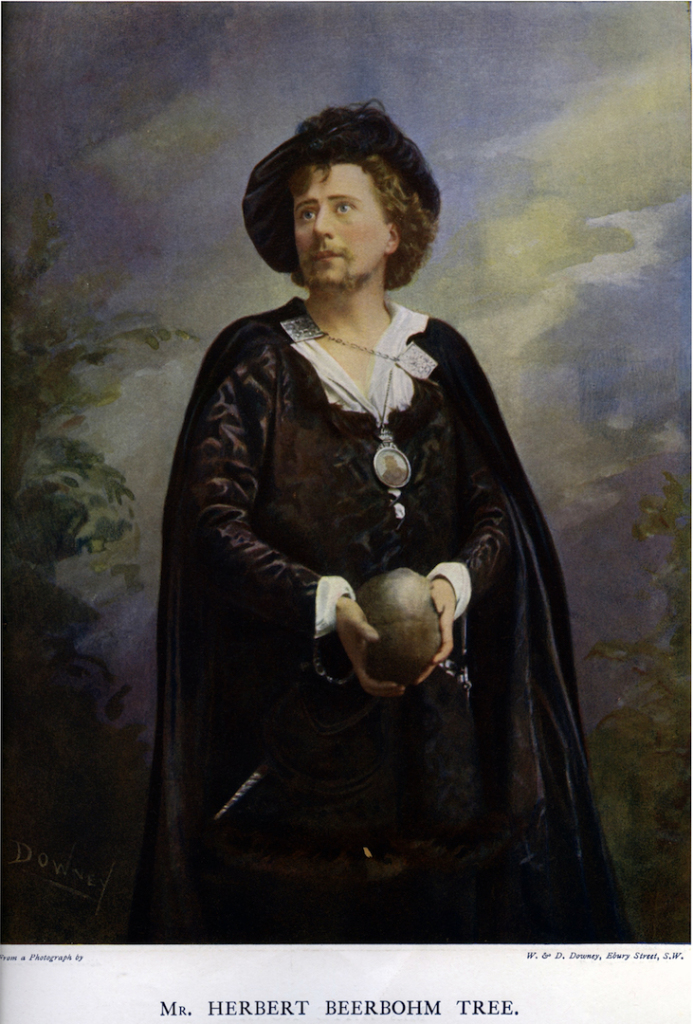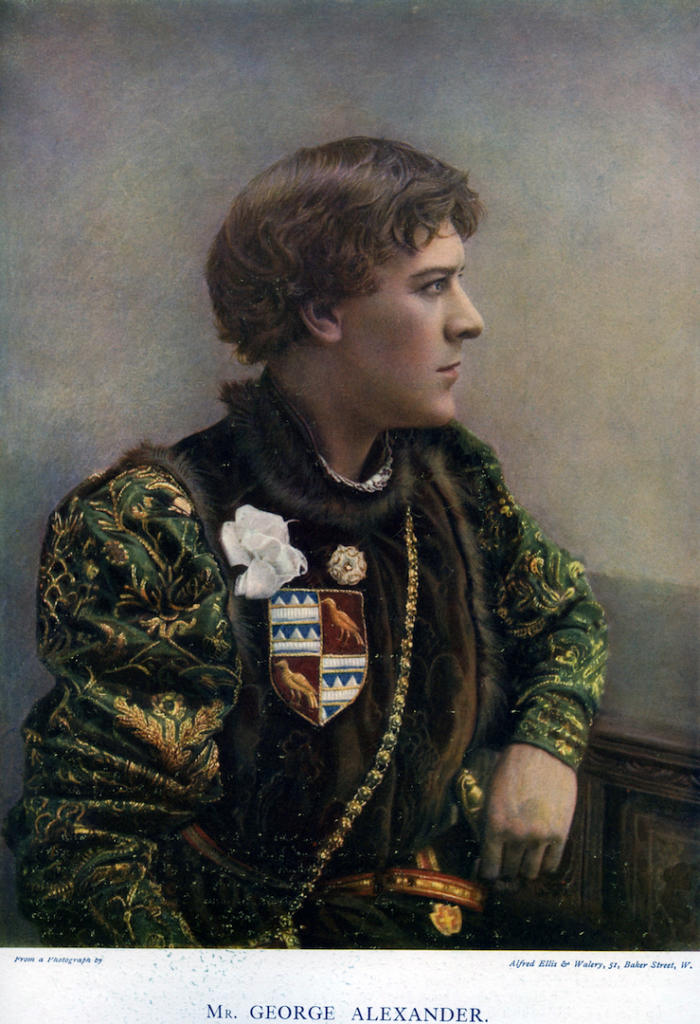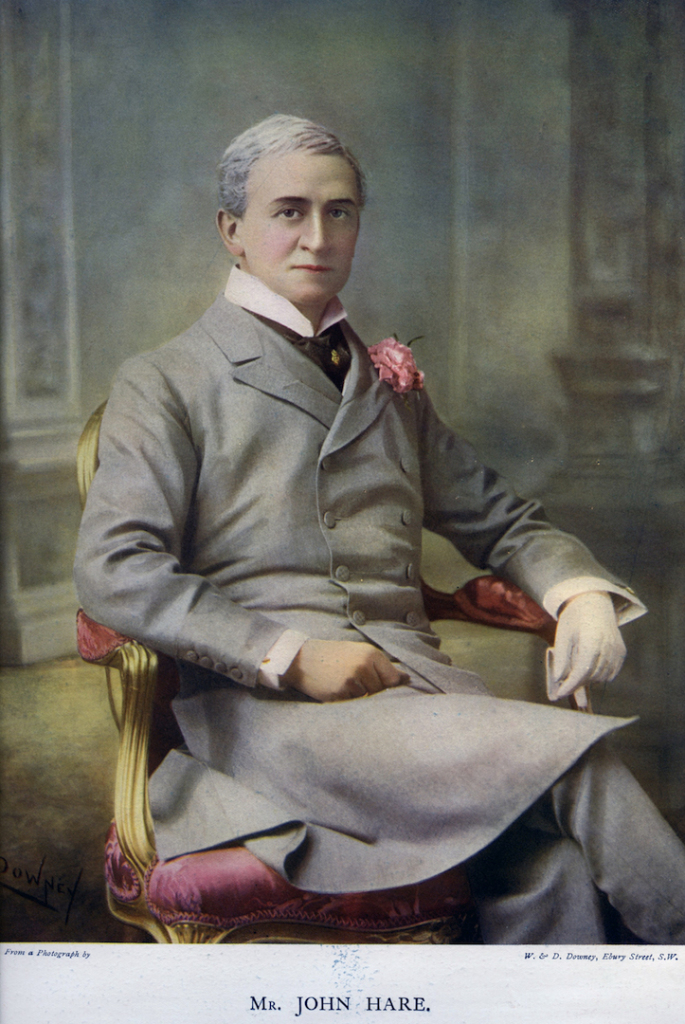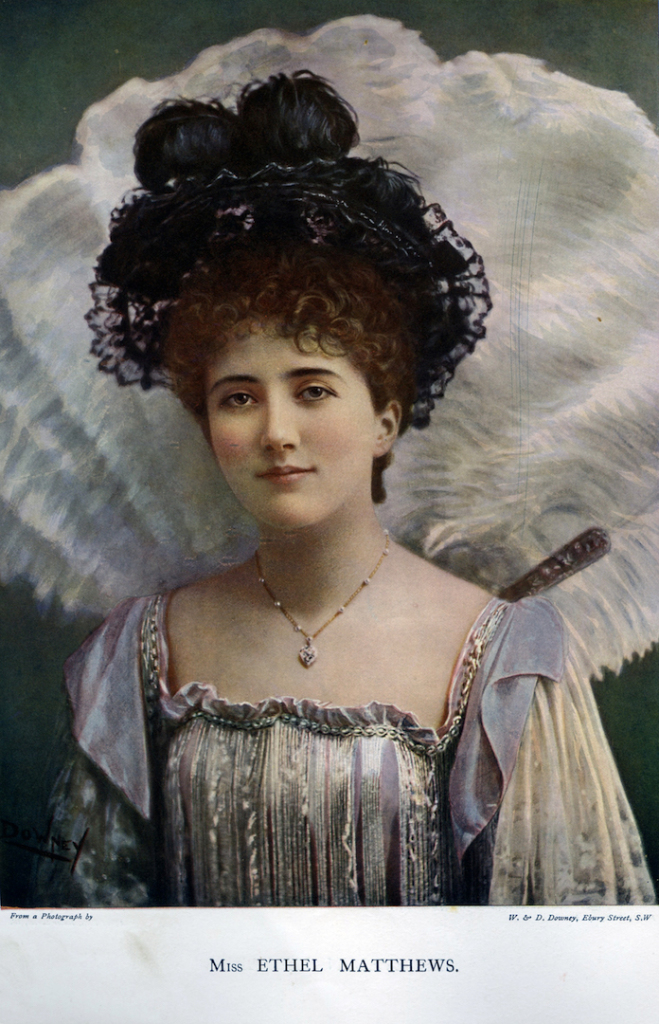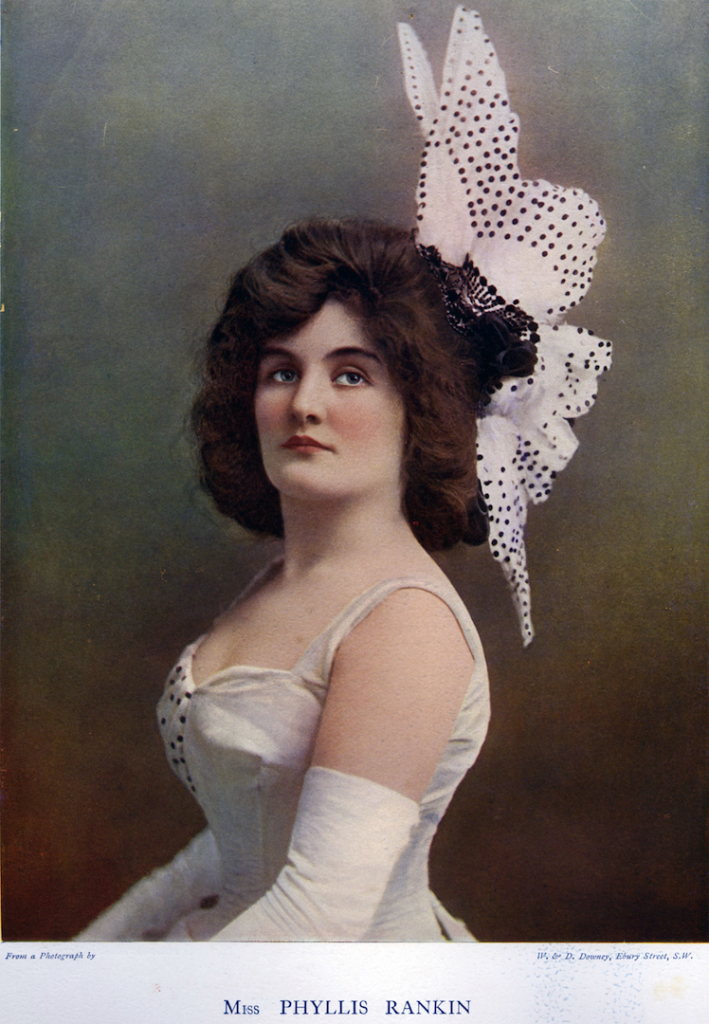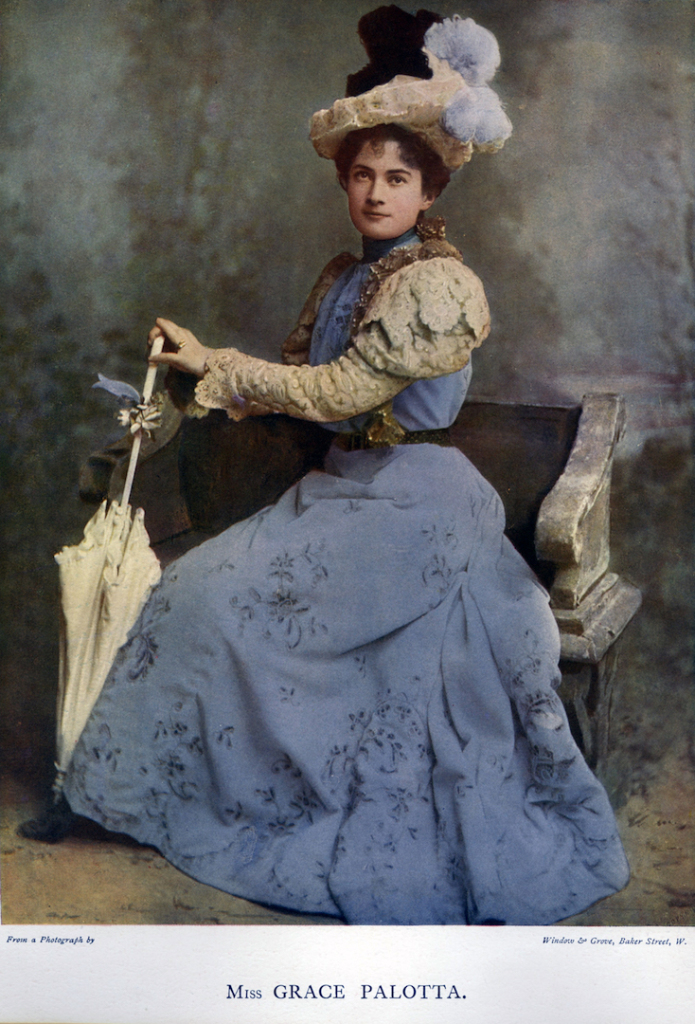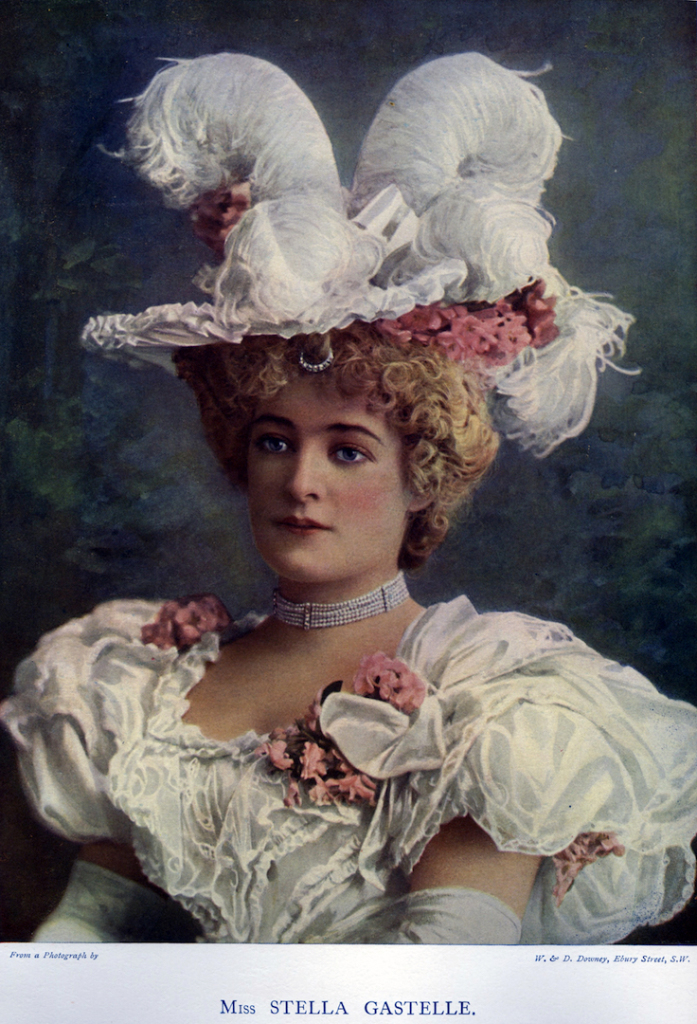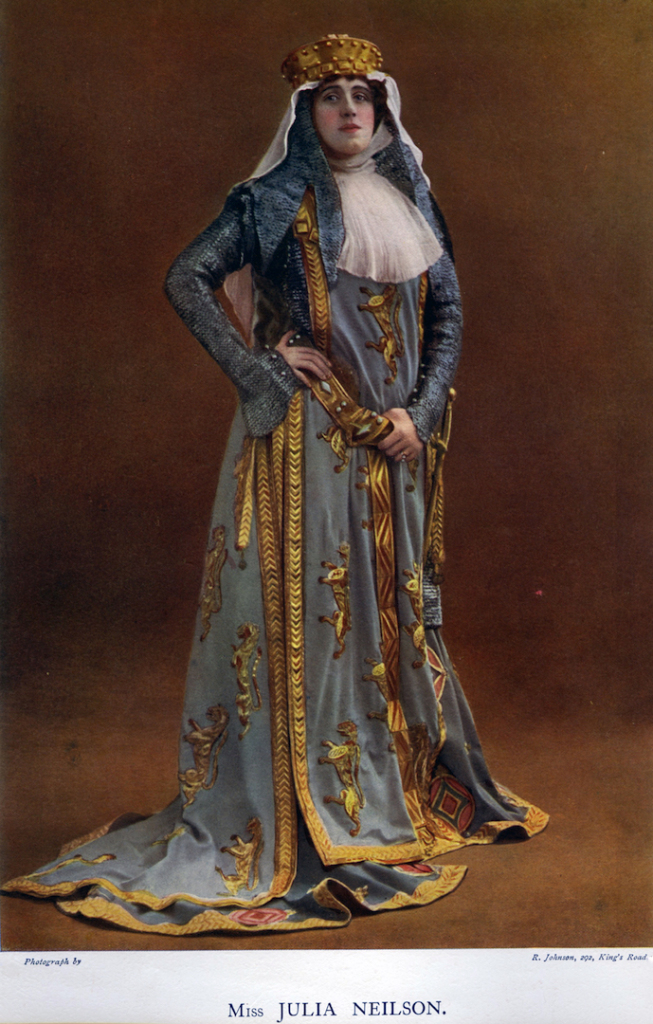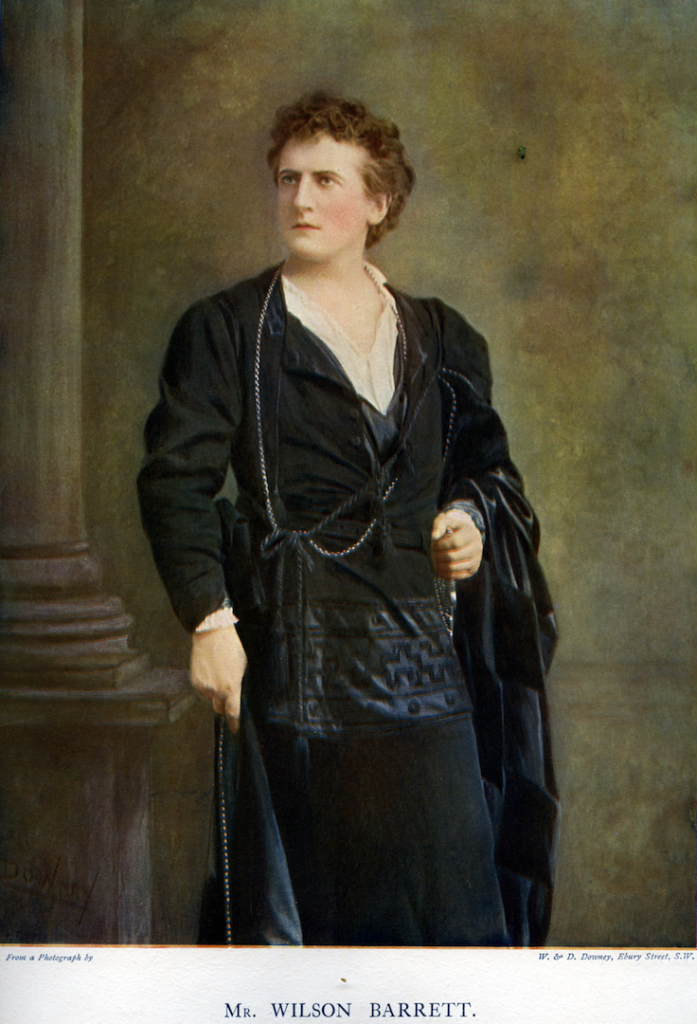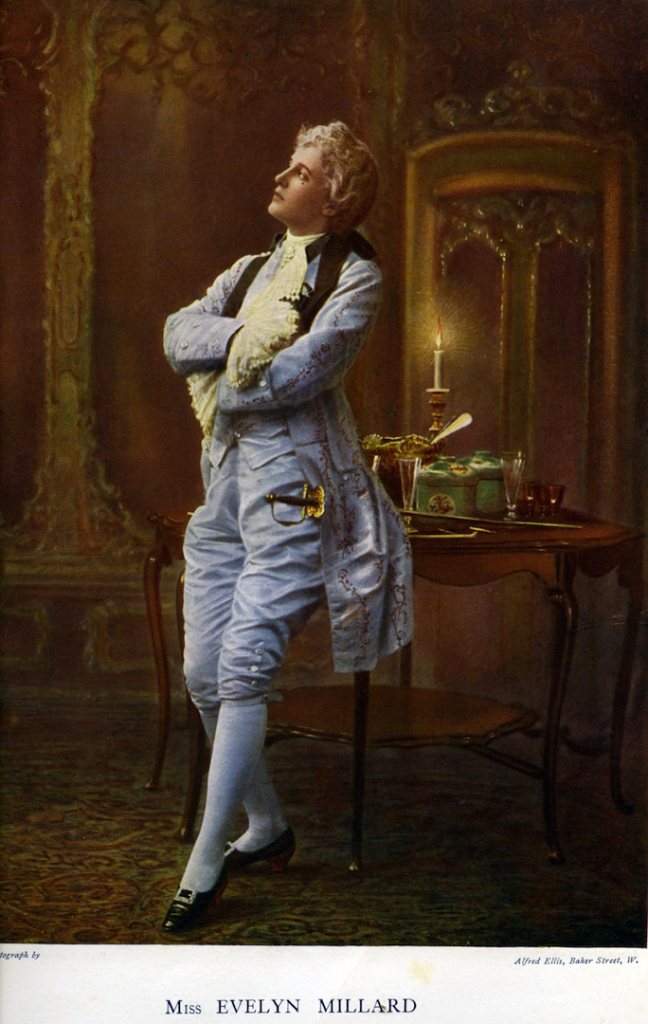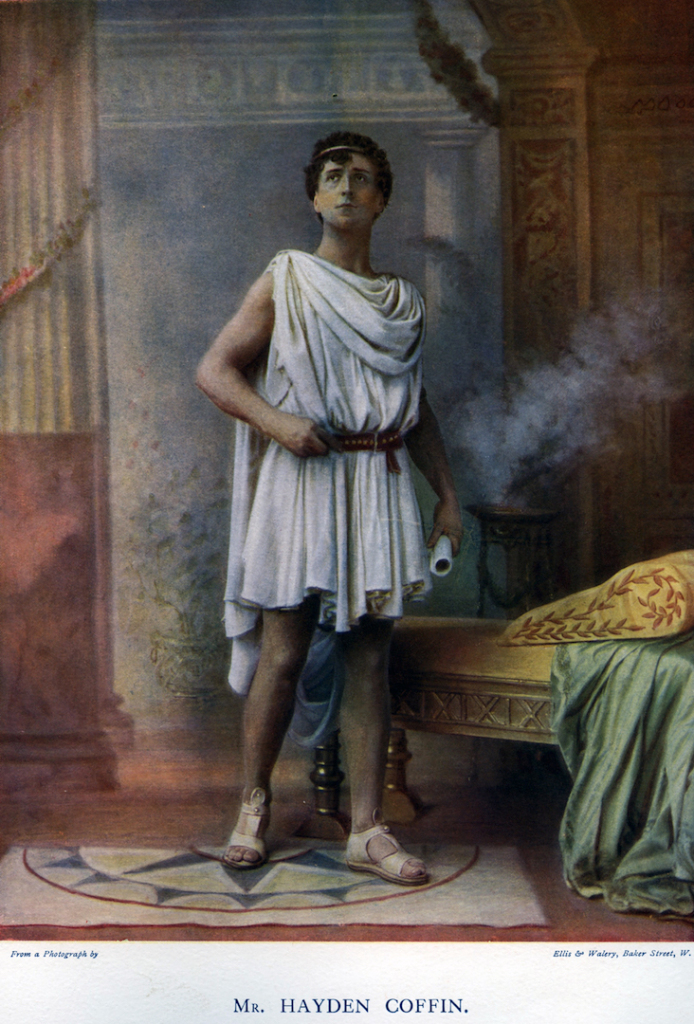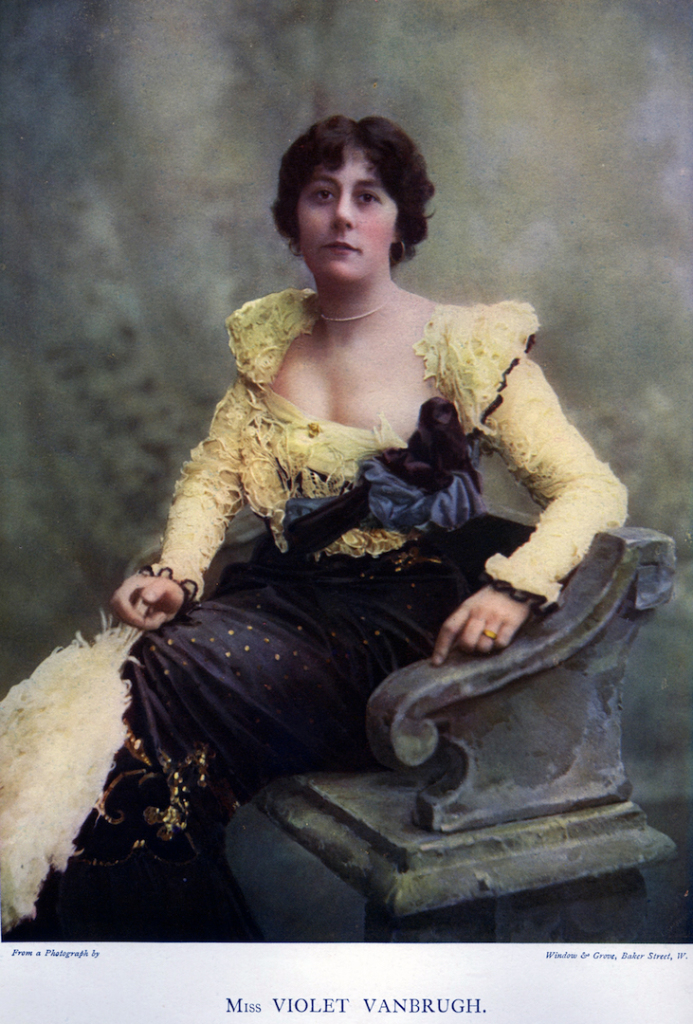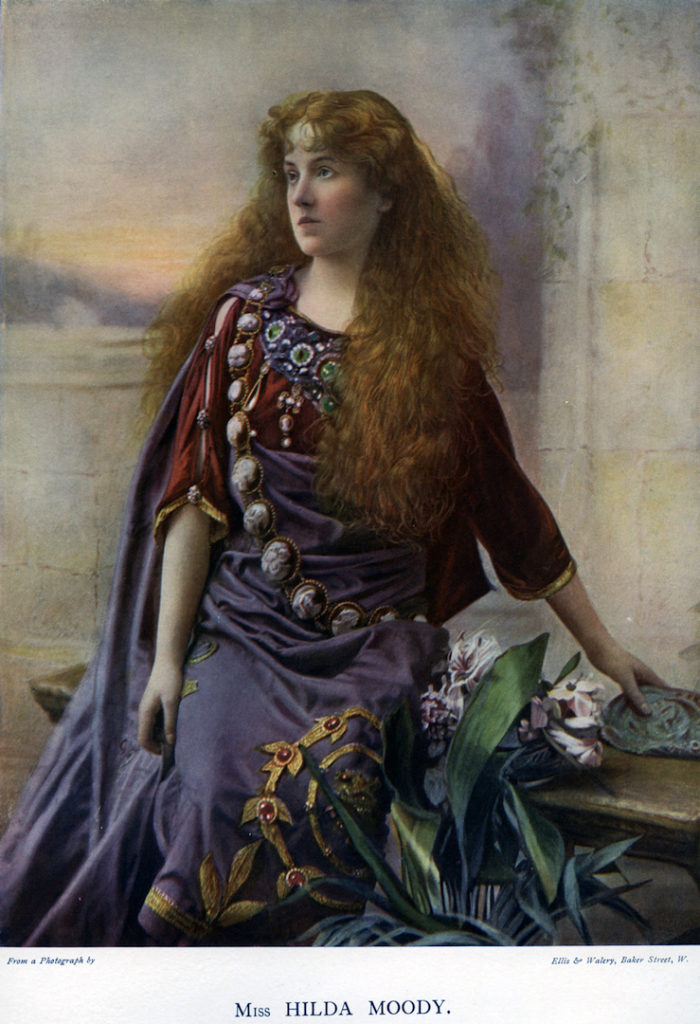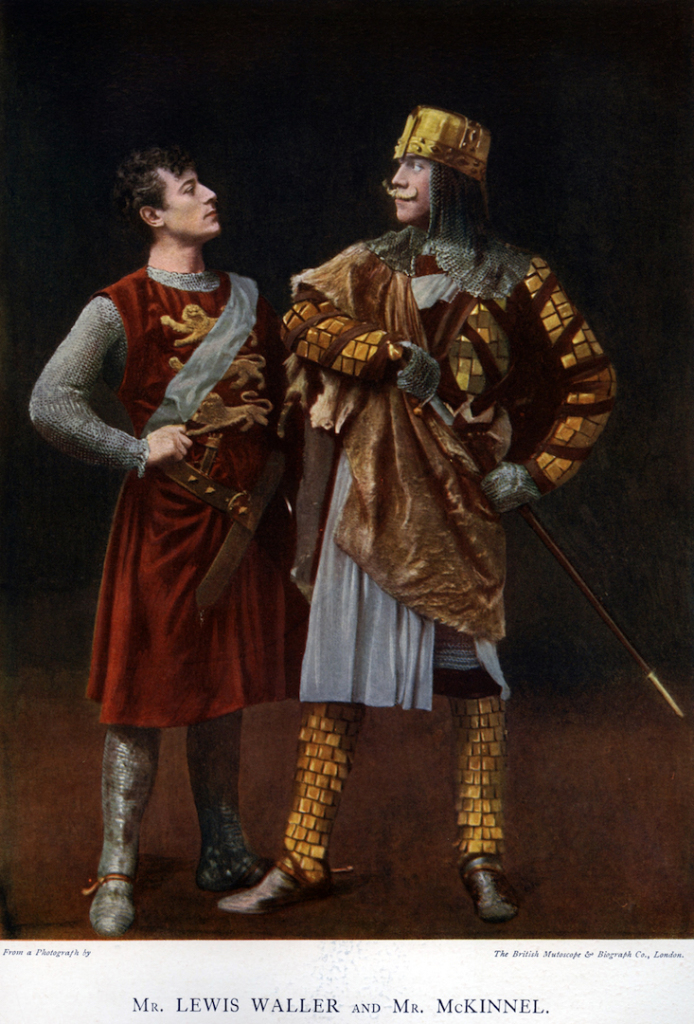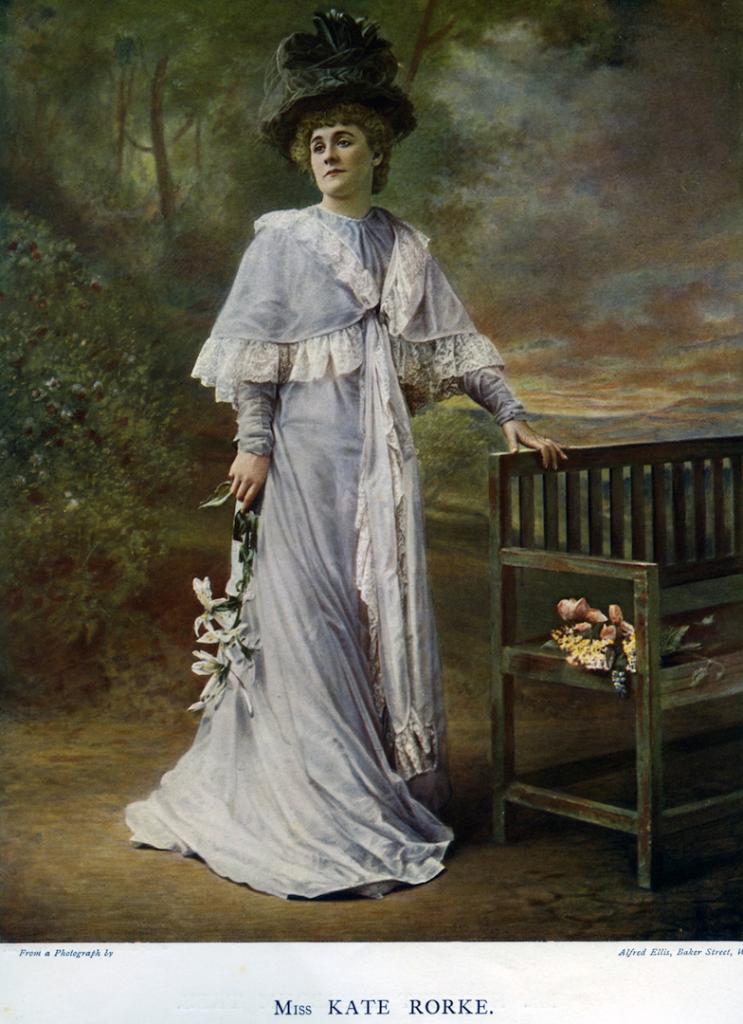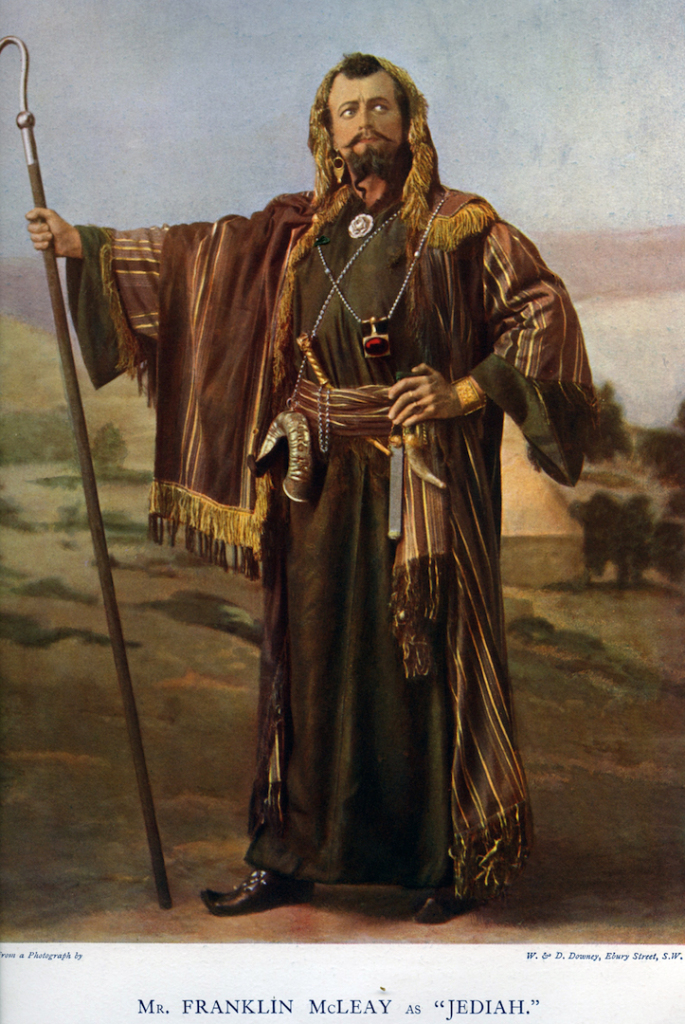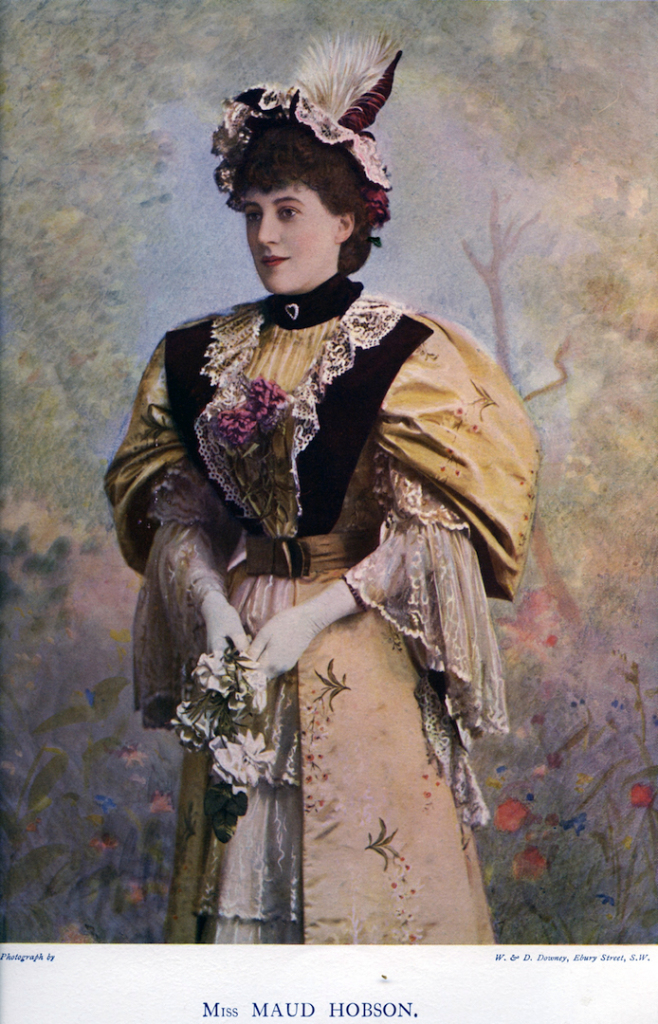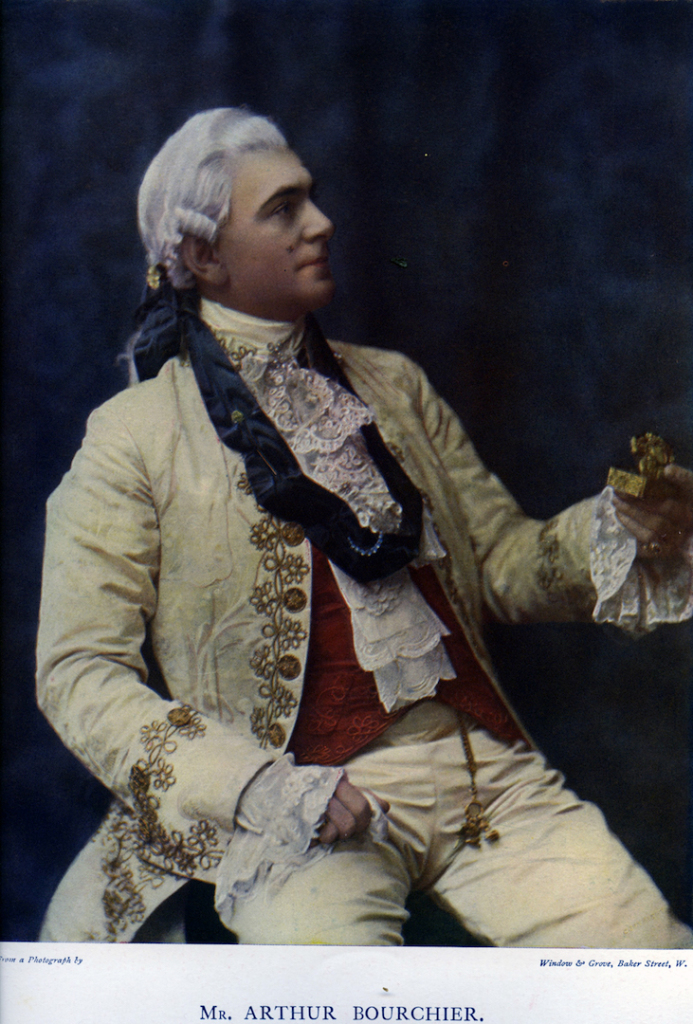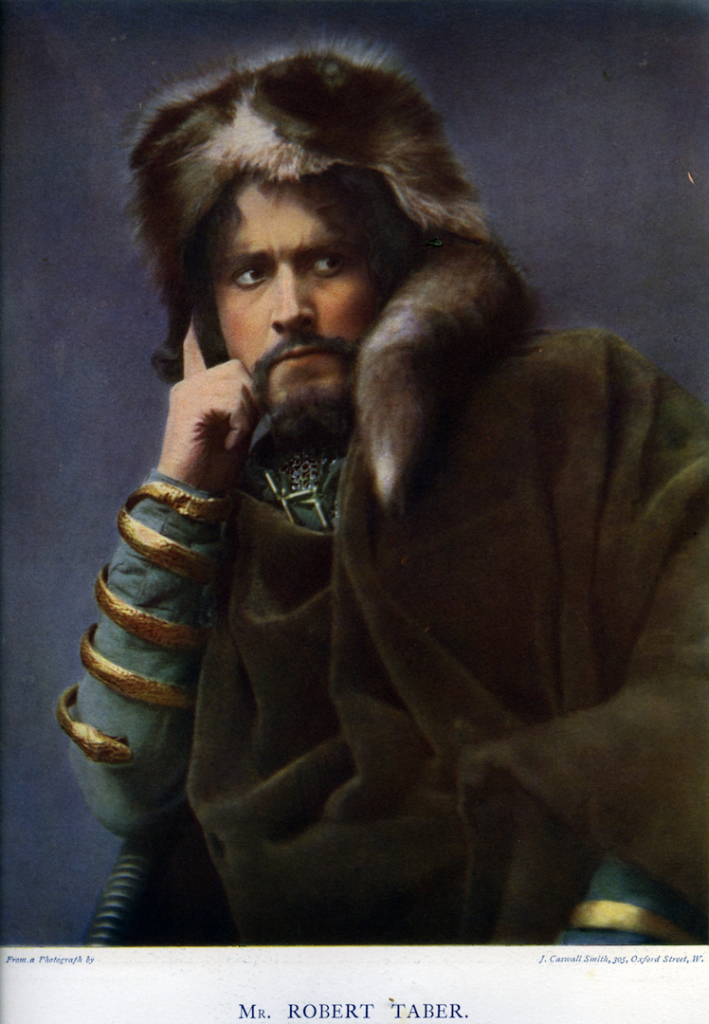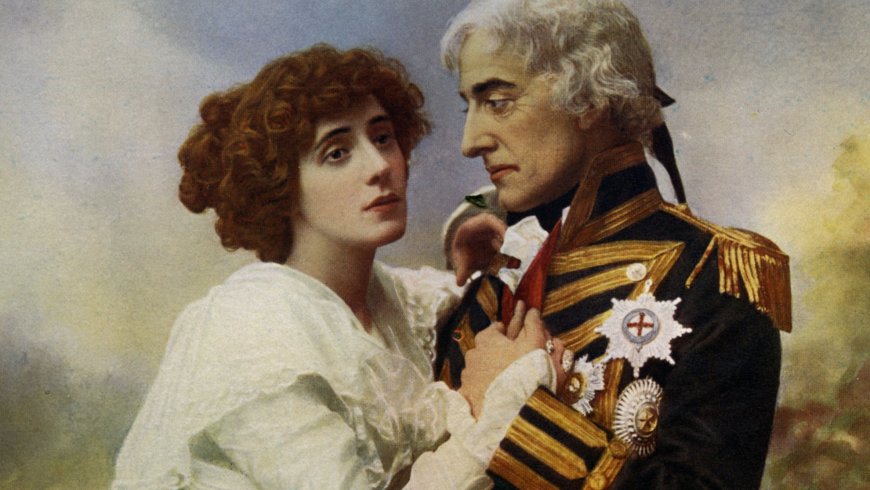
Having grown up in a family involved in the London Theatre scene, (but not in the 1900s!), one of my childhood memories is of a long hallway on the first floor of our Oxfordshire Jacobean farmhouse that was lined with small antique prints on both walls, all framed in black and gold guilted frames. Those prints were not coloured, as the beautiful ones that follow below, but were just as theatrical with wonderful convincing facial attitude and expression and very pompous costumes. These prints used to fascinate me and whenever I walked down that hallway that led to my parents bedroom I would fantasticate that maybe one day I would have been destined to that world. That never happened and those childhood dreams remained in that hallway but still occupy a small space deep in my heart.
For centuries, London theatre has celebrated a rich and influential history. As theatres increasingly catered for popular taste in the first half of the 19th century, the support of the upper and middle classes declined, although they still attended the opera. Audiences were often noisy and not always well-behaved. If an actor was disliked, insults and/or missiles such as apple cores or bottles were thrown.
By the mid 19th century music hall and circus were in favour with working class audiences. Comic and sentimental songs were popular and the audience joined in the choruses. As opera was popular with the upper and middle classes, being appropriately dressed became a condition of entry. Evening dress was obligatory for those sitting in the boxes and the first gallery, known as the ‘dress circle’. In the late 19th century the orchestra stalls replaced the pit and became the fashionable place to see and be seen. Although not compulsory, it was considered bad form not to be smartly dressed when sitting in the stalls. As well as the disruptive elements, there were those who were paid to go and be supportive. The author’s friends would applaud everything loudly whether the play were good or bad and hack journalists would be paid to write wonderful reviews, or ‘puffs’ as they were known.
From the mid 19th century the development of theaters in London’s West End with comfortable seating and facilities and a more refined repertory attracted the middle classes back to the wider theatre. The great alteration, however, didn’t come until the middle of the Victorian era. The greatest work done to improve theatre’s perception was done by none other than Queen Victoria. The Queen’s encouragements of the theatre not only pumped fresh air into the London theatre, but theatre was also understood as “something destined to yield a rich harvest in the future”.
Oscar Wilde is one of the most prominent playwrights of the Victorian era. Wilde’s easy wit insured an immediate success for the brilliant series of dramas that he wrote in the early nineties. By 1900 most theatres were lit by electricity and the auditorium was darkened during the performance. The stage was framed by the proscenium arch and separated from the auditorium by the orchestra pit. These huge theatres affected the acting style as they encouraged loud voices and broad gestures that registered across the huge auditorium. Under these conditions, spectacle and farce were the entertainments that worked.
The exceptional prints that BARNUM offers for your appreciation and enjoyment are here below and depict the essence of those times in the London Theatre world.
Ladies and Gentlemen, this is the last call. Take your seats and let the curtain go up…
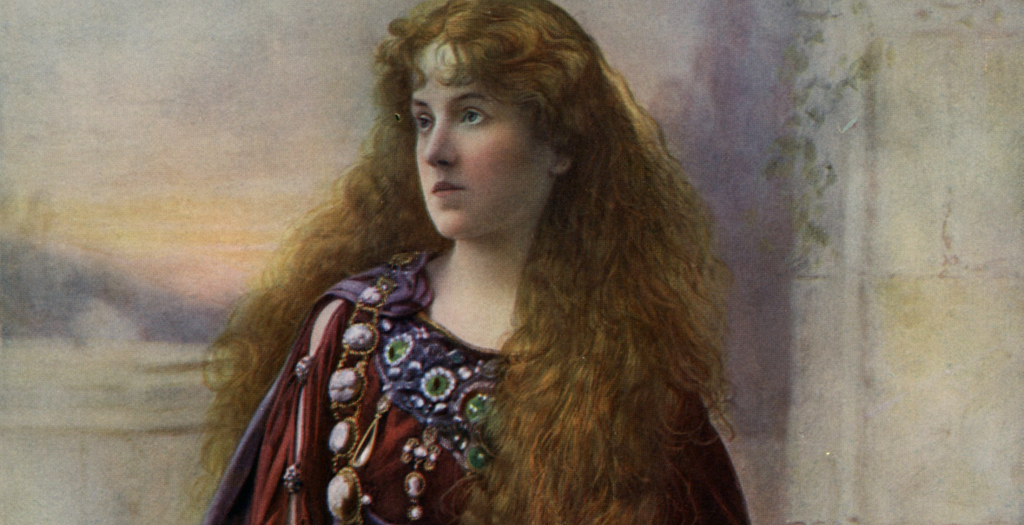
Technical References (Massimo Pacifico)
The images proposed here are a true rarity. They come from a specimen, admirably survived, of the publication, undated, but almost certainly appeared in the very year of the start of the twentieth century, entitled Celebrities of the Stage with texts by Lawrence Boyle and the editorial attention by the publisher, George Newness, who had an address of total respect: Southampton Street, Strand, W.C.. And respectable was the career of this journalist and publisher who, in 1891, had founded The Strand Magazine (in which the adventures of Sherlock Holmes appeared for the first time ) and already published, with great success The Wide World Magazine and Country Life. Liberal, Member of Parliament on several occasions, he was also a promoter of the railway line that linked Lynton to Barnstaple, in North Devon, after being named Baronet of Wildcraft. With the same title of Celebrities of the Stage, Newness published, always in London, a weekly with photographs of the actors on the scenes of the biggest theatres and their biography and, probably the collection is a kind of fine yearbook, also for the large format (26×36 cm approx. with images that measure 19×25 cm.). That Sir Newnes was a gentleman of great taste, and of great pretensions, it is also presumed from the names of the photographers who signed the reproduced images, for the time, in a flawless tri-color. Images shot in black and white and then watercolored masterfully often bear the signature of W. & D. Downey, photo studio among the most popular in London.
The atelier of the brothers William (1829 – 1915) and Daniel (1831 – 1881) produced some of the most important portraits of Victorian London. William was attributed with the nickname of the Queen’s photographer after, in the 60s, he had photographed the Balmoral estate. He had his atelier in Ebury Street S.W. and mastered, as is clear from the pictures, the light with dexterity as well as being an accomplished film director. At the time of these shots Daniel, who was in charge of the company in the other studio in Newcastle, had already died, but the initial of his name still appeared in the signature on the photographs.
The brothers collected over a hundred portraits of the Queen and at their address in London, writers, successful entrepreneurs, and especially celebrities of the stage queued. Sarah Bernhardt noted in the album of the atelier: “Dear Friend Downey, you’re the king of the photographers and the most amiable of men”.
Politicians did not however need to go to have a portrait in Ebury Street, because already, in 1863, the Downeys had set up a photographic studio in the Houses of Parliament in which in turn, all parliamentarians, including William Ewart Gladstone and Lord Palmeston took their seats.
Other photographers known for their portraits of actors, (some appear below), were Alfred Ellis who had studio in Upper Baker Street, at number 20, and Window and Grove located at 63 Baker St. One wonders if they ever ran into Sherlock Holmes who lived at 221b?
